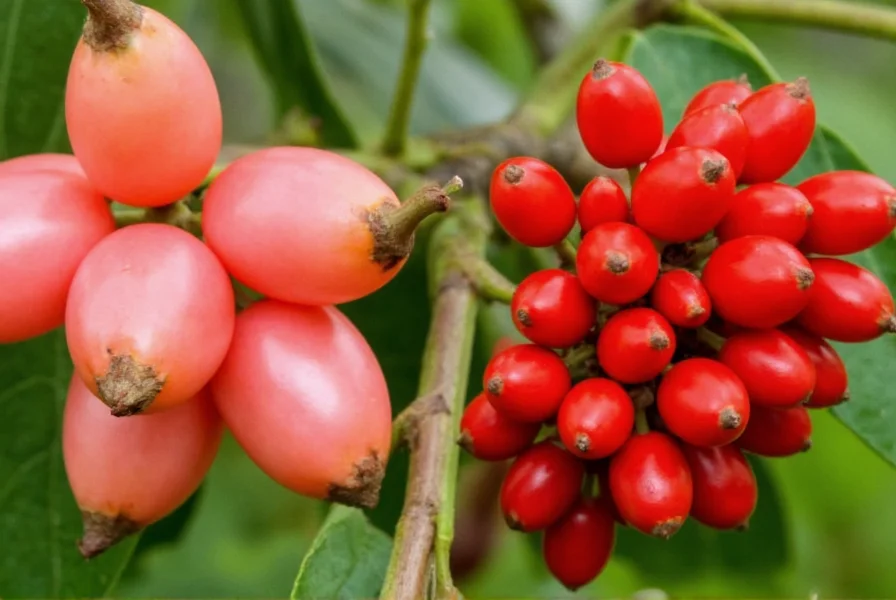Understanding the distinction between different "pepper trees" is crucial for proper identification, cultivation, and management. While often planted for their aesthetic appeal, these trees present specific considerations that gardeners and property owners should understand before planting or dealing with existing specimens.
Types of Pepper Trees: Clearing the Confusion
When discussing pepper trees, two primary species dominate the conversation, though they're frequently confused with each other and with true pepper plants:
| Species | Common Name | Native Region | Key Characteristics |
|---|---|---|---|
| Schinus molle | Peruvian Pepper Tree | Peru, Bolivia, Argentina | Gray-green pinnate leaves, weeping habit, pink berries |
| Schinus terebinthifolius | Brazilian Pepper Tree | Brazil, Argentina, Paraguay | Bright green leaves, upright growth, dense red berry clusters |
| Piper nigrum | True Black Pepper | Southwest India | Vining plant, not a tree, produces actual peppercorns |
Identification Guide for Pepper Trees
Accurate identification of pepper trees is essential, particularly in regions where Brazilian pepper is considered invasive. The peruvian pepper tree identification process involves examining several key features:
Peruvian Pepper Tree (Schinus molle):
- Distinctive weeping or drooping growth habit
- Gray-green compound leaves with 19-41 leaflets
- Smooth, light gray bark that becomes rougher with age
- Pink to red berries that hang in loose clusters
- Can reach heights of 15-25 meters (50-80 feet)
Brazilian Pepper Tree (Schinus terebinthifolius):
- Upright, dense growth pattern
- Bright green compound leaves with 7-19 leaflets
- Bark is gray and relatively smooth
- Dense clusters of bright red berries
- Typically grows 7-10 meters (20-30 feet) tall
Native Habitat and Ecological Impact
Both Schinus species originate from South America but have been introduced to many warm climate regions worldwide. The brazilian pepper tree invasive species problem is particularly severe in Florida, Hawaii, and parts of Australia, where it outcompetes native vegetation and forms dense monocultures.
Ecological concerns include:
- Production of allelopathic chemicals that inhibit growth of other plants
- High seed production and dispersal by birds
- Ability to thrive in various soil conditions and tolerate drought
- Formation of dense thickets that displace native species
In contrast, the Peruvian pepper tree is generally less invasive but can still become problematic in certain ecosystems. Both species belong to the Anacardiaceae family, which includes poison ivy, poison oak, and poison sumac, explaining why some people experience pepper tree allergies symptoms similar to reactions from these toxic plants.
Cultivation and Care Requirements
For those considering planting a pepper tree or caring for an existing one, understanding proper pepper tree care and maintenance is essential:
Planting Considerations:
- Choose a location with full sun exposure
- Ensure well-draining soil (both species tolerate various soil types)
- Maintain adequate spacing from structures (roots can be invasive)
- Check local regulations as Brazilian pepper is prohibited in some areas
Ongoing Maintenance:
- Water regularly during first year, then minimal watering required
- Prune to maintain shape and remove dead branches
- Monitor for pests like aphids and scale insects
- Remove seedlings promptly to prevent spread
Safety Concerns and Toxicity
One of the most frequently asked questions is is pepper tree toxic to dogs and other pets. While the berries are sometimes used as a spice substitute ("pink peppercorns"), they can cause issues:
- All parts of the plant contain compounds that may cause skin irritation
- Berries can cause gastrointestinal upset if ingested in quantity
- People with poison ivy sensitivity often react to contact with leaves or bark
- Pets may experience vomiting or diarrhea if they consume significant amounts
Despite these concerns, the berries have been used traditionally for various purposes. The pepper tree benefits and uses include:
- Ornamental landscaping in appropriate climates
- Berries used as a mild spice (with caution for sensitive individuals)
- Historical medicinal applications in native cultures
- Provides nectar for pollinators and food for birds
Management and Removal
For properties dealing with unwanted pepper trees, particularly invasive Brazilian pepper, proper removal techniques are critical. Simply cutting the tree often leads to vigorous regrowth from the roots. Effective strategies for how to remove pepper tree roots include:
- Cutting the tree near ground level
- Immediately applying appropriate herbicide to the stump
- Monitoring for and treating root sprouts
- Removing seedlings before they establish deep roots
- Considering professional help for large specimens
Complete eradication requires persistence, as seeds can remain viable in the soil for several years. Always check local regulations before removing trees, as permits may be required.
Understanding the Difference: Peruvian vs. Brazilian Pepper Tree
One of the most common points of confusion is the difference between peruvian and brazilian pepper tree species. While they share similarities, key distinctions affect their cultivation and management:
- Growth habit: Peruvian has a graceful, weeping form; Brazilian grows upright and dense
- Leaf color: Peruvian has gray-green foliage; Brazilian displays brighter green leaves
- Berries: Peruvian produces pink berries in loose clusters; Brazilian has dense red clusters
- Invasiveness: Brazilian is significantly more invasive in many regions
- Cold tolerance: Peruvian is slightly more cold-hardy than Brazilian

Conclusion
Pepper trees offer attractive landscaping options but require careful consideration due to potential invasiveness and allergy concerns. Proper identification is the first step in determining appropriate management strategies. Whether you're considering planting a pepper tree or dealing with an established specimen, understanding the specific species, its growth requirements, and potential impacts will help you make informed decisions for your landscape.











 浙公网安备
33010002000092号
浙公网安备
33010002000092号 浙B2-20120091-4
浙B2-20120091-4